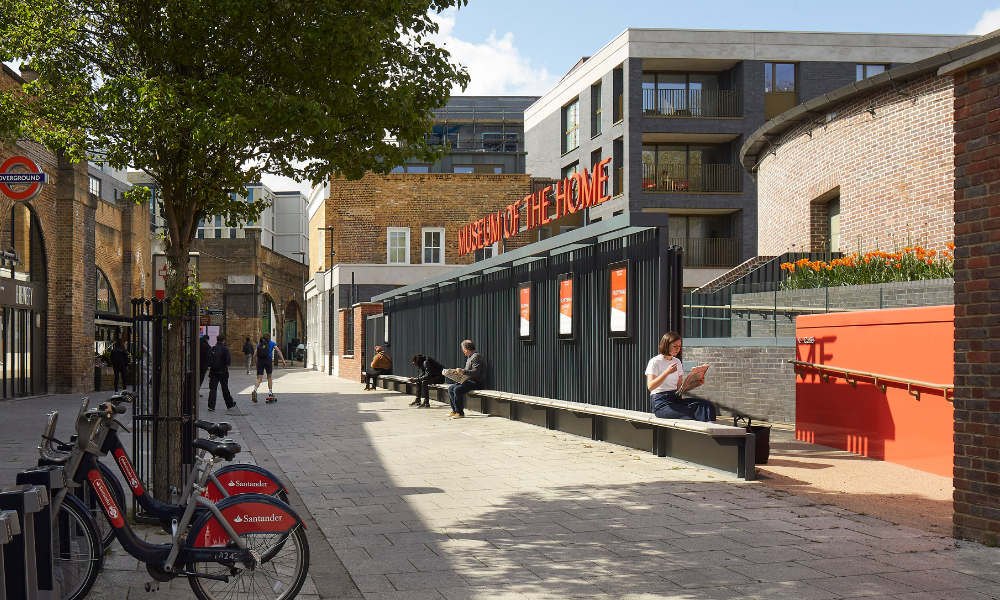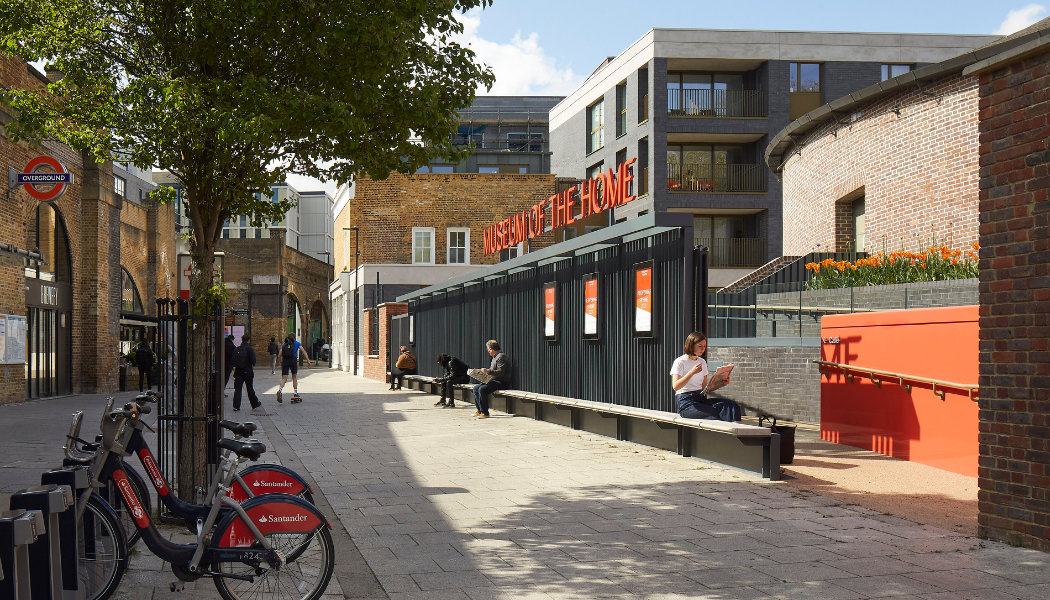In January 2018, we closed the doors of the Geffrye Museum for a major capital redevelopment. We reopened in June 2021 as Museum of the Home, the place to reveal and rethink the ways we live in order to live better together – with nearly double the public space, including new galleries and learning spaces. Emerging from the global pandemic, we are realising our new socially engaged vision, with issues-focused programming and a celebration of diverse collections that pose the question – ‘what does home mean to you?’.
In essence, the concept behind Museum of the Home is that every visitor has an idea of home, whether positive or negative, comforting or alienating. The new Museum positions the visitor as the expert in their own journey through the history of domestic experience.
Visitor first approach
Pre-2017 visitor numbers at the Museum averaged approx. 120K per annum. This year to date, we have exceeded 160K, with an upward trajectory that puts us on target to achieve our ambition of 230K visitors by 2028.
With rising visitor numbers, at both at the physical Museum site and across our digital platforms, there have been some key areas of engagement, notably with audiences aged 21 to 30, families, and East and South-East Asian audiences. Visitors, both new and returning, are responding with enthusiasm to the more inclusive stories of home evident in our galleries, programming and digital content, and to the positioning of the Museum as a brave space for debate on the meaning of home.
Museum of the Home takes a visitor-first approach – with a warm welcome from our Visitor Experience Team forming an essential part of our identity. Every full-time member of staff across all Museum departments takes part in the front of house rota – greeting visitors and witnessing the content that is really gaining traction in our galleries. This also encourages an agile way of working as, with first-hand observation, we can tweak and adapt to changing visitor needs.

Remaining deeply personal but universally relevant
Museum of the Home is focused on growing content that is personal, powerful and reflective of the diversity of modern London. Rooted in east London, but with a national remit, we take local place-based stories of home that have global relevance.
Our Real Rooms Project, which has embedded community co-production and visitor consultation, will see a complete redisplay of our famous room-sets from the 1860s to the present day. Here we will explore everyday domestic experiences and expand representation of migration and gender identity in the UK home alongside stories of style, taste and design. For the first time, we will have a permanent display dedicated to the future home, a dynamic space exploring the future of our homes among societal challenges such as climate change and technological advancement.
Lived experiences of home are further explored through our flagship programming – by establishing our annual Winter Festival in the UK cultural calendar, from Diwali to Lunar New Year, and by introducing a family-focused Summer Party in 2023; a chance to come together and celebrate the Museum, its east London location and its communities.
Curated commercial
Selling fairs have been a major contributor to audience growth and visitor engagement through challenging times in the sector. From Queeriosities Art & Makers Fair, featuring LGBTQI+ creatives to the return of the widely successful Ceramics in the City, these are beautifully curated events with external partners that offer a blended retail and programming experience, including supper club tie-ins and film screenings.
Since reopening we have also increased the profile of our gardens, which are a major asset in this heavily populated part of town. The gardens, exhibiting changes to urban gardens over the centuries, are now open to visitors all year round and are the focus of our hires business, including weddings. This is a key growth area for the Museum and draws upon the site as a small-mid size venue with a great story to tell.

Museums and social justice
We are delivering on our ambition to live better together. Our pioneering Campaign for Change – working in partnership with front-line charities to make a difference on issues affecting the ways we live – aims to tackle hunger and create belonging. It is one of the ways in which we, as a Museum, can use our collections and programming to address inequalities and think harder about what it means to ‘preserve’ history – whose stories are represented in our cultural spaces and for what purpose? For example, when we display a plate on a table in a room set what could we say, and should we say, about food?
The Food Equality Campaign has four pillars that we will deliver over the next 5 years: continue to support Hackney Food Bank at the Museum; design and build a Discovery Garden with local schools and families to explore urban planting; build a strand of food programming to focus on community dining and the history of food and eating in the home; host Free Tea Fridays to bring together local people with our own bespoke Museum tea blend.

We are working to heal the rifts between the Museum and its communities caused by the presence of the statue of Robert Geffrye on the Museum’s buildings. Geffrye profited from investments in transatlantic slavery and bequeathed money to the Ironmonger’s Company to build the almshouses in which the Museum is now housed. We will continue to work with Voyage Youth in residence, and with wider stakeholders to plan for the redisplay of the statue and give space to histories of colonialism and the home – part of a UK sector-wide reassessment of the systems that underpin and continue to shape cultural organisations.
The future of museums
Across all areas of our work, we are looking to disrupt the traditional museum model to create a museum fit for the twenty-first century, able to respond with agility to all the challenges to come. We are a space uniquely placed to explore the changes to homes and home life that will be necessary for us, as a society, to face the future.











